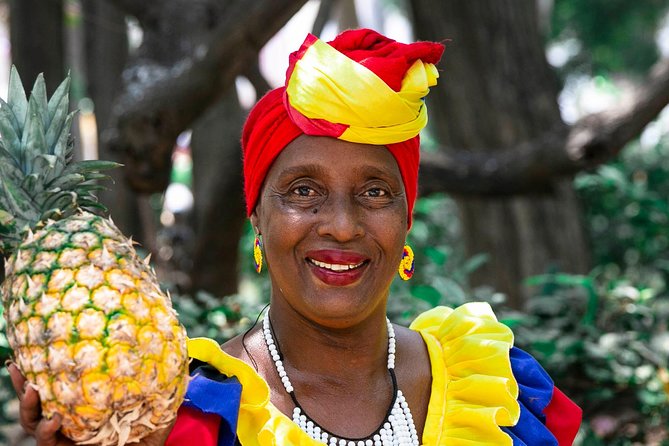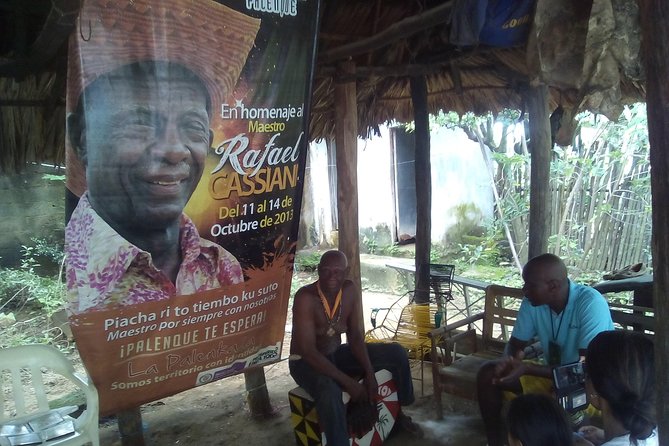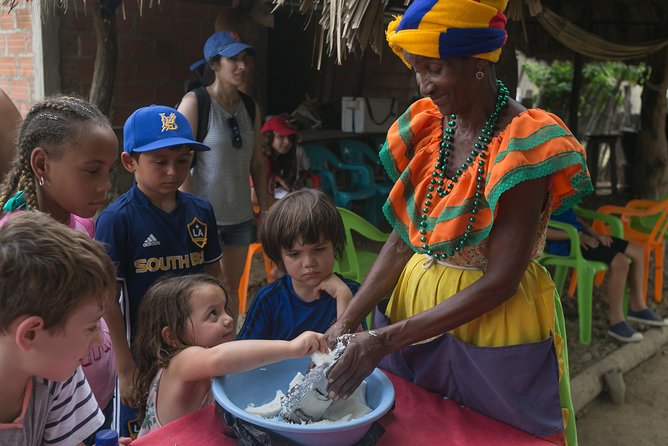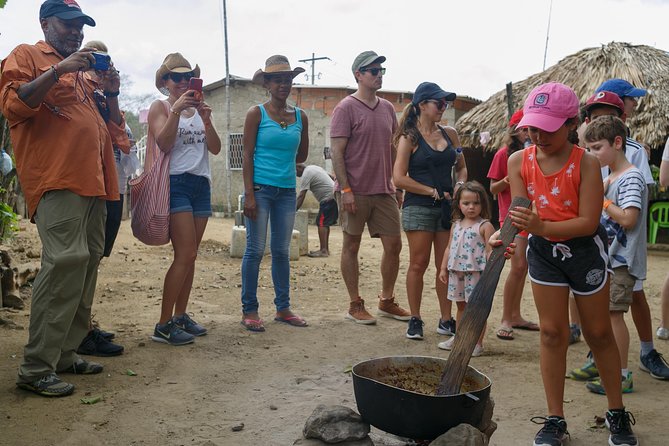Nestled in the heart of Colombia, Palenque de San Basilio stands as a living testament to the resilience and cultural heritage of escaped African slaves. This remarkable community, often referred to as "Little Africa in America," has preserved its West African roots through timeless traditions, from the rhythmic beats of Champeta to the distinct Creole language that echoes through its streets. Visitors to Palenque can enjoy a world where the past and present seamlessly intertwine, hinting at the profound story that waits to be uncovered within this captivating corner of the Americas.
Key Points

-
Palenque de San Basilio, an Afro-Colombian town, represents the resilience and ingenuity of freedom fighters who escaped slavery and established a thriving community in the 17th century.
-
The town’s rich culture reflects strong West African roots, showcased through traditions like Lumbalú, Champeta, and the Palenquero Creole language.
-
The community’s architectural and artistic features, including adobe houses, the iconic church of San Basilio, and artisan workshops, exhibit a fusion of African and Spanish influences.
-
Palenque’s daily life and community engagement, such as lively markets, traditional music and dance performances, and the central plaza as a gathering place, highlight its deep connection to ancestral roots.
-
Palenque de San Basilio is a significant historical site that symbolizes the liberation of enslaved Africans and the preservation of their cultural heritage in the Americas.
Tracing Palenque’s African Roots

Palenque de San Basilio’s rich African heritage is deeply woven into the fabric of this historic village. Established in the 16th century by Africans who escaped Spanish colonial rule, Palenque boasts a thriving culture that harkens back to its West African roots.
Residents preserve traditions like Lumbalú, a funeral rite with rhythmic chants and dances, and Champeta, a musical genre influenced by Caribbean and African sounds.
The village’s architecture, language, and cuisine also bear the unmistakable mark of its African ancestry, making Palenque a living testament to the resilience and ingenuity of those who fought for their freedom centuries ago.
You can also read our reviews of more tours and experiences in Cartagena.
Uncovering Enslaved People’s Resistance

The stories of how enslaved people in Brazil gained their freedom are deeply intertwined with Palenque de San Basilio‘s origins.
In the 17th century, runaway slaves from neighboring regions fled to the mountains and established Palenque, Colombia’s first free black settlement. These Africans resisted enslavement, forging a community with its own language, customs, and governance.
Palenque’s creation symbolized the power of the human spirit to overcome oppression. Today, the village’s traditions, rooted in West Africa, continue to inspire visitors, reminding them of the long, arduous struggle for liberty.
Palenque’s history stands as a testament to the indomitable will of those who refused to be silenced or subjugated.
Preserving Cultural Traditions
In Palenque de San Basilio, the preservation of cultural traditions remains a steadfast commitment. This historic Afro-Colombian village, founded by freed slaves, safeguards its roots through language, music, and ancestral rituals.
| Tradition | Description |
|---|---|
| Lumbalú | A sacred funeral ritual honoring the dead |
| Champeta | A vibrant musical genre blending African and Caribbean influences |
| Palenquero | A Creole language rooted in Spanish and West African tongues |
| Gastronomic Heritage | Dishes like sancocho and bollo reflect African culinary traditions |
These cultural practices keep the spirit of Palenque alive, connecting its people to their storied past and ensuring the endurance of their unique identity.
Exploring Palenque’s Architecture and Art
One step into Palenque de San Basilio reveals a captivating architectural tapestry, where the village’s storied past is woven into its very structures.
The adobe houses, with their distinctive thatched roofs, are a testament to the resilience and ingenuity of the Palenqueros, the descendants of the first free Africans in the Americas. The village’s art and crafts, including the intricate weavings and vibrant murals, further showcase the community’s rich cultural heritage.
Visitors can explore:
- The iconic church of San Basilio, a fusion of African and Spanish architectural influences.
- The historic plaza, the heart of the community, where traditional dances and celebrations take place.
- The Museo de Palenque, which houses a collection of artifacts and exhibits on the village’s history.
- The artisan workshops, where skilled craftspeople produce traditional textiles, pottery, and other handmade goods.
Experiencing Palenque’s Vibrant Community
Stepping into Palenque de San Basilio, visitors enjoy the vibrant community life that pulses through the village.
Residents gather in the central plaza, engaging in lively conversations and trading goods at the bustling market.
Traditional music and dance performances showcase the rich cultural heritage, passed down through generations.
Visitors can observe artisans crafting intricate handwoven baskets and other unique items, reflecting the community’s deep-rooted connection to their ancestral roots.
The rhythm of daily life in Palenque offers a glimpse into a world that has remained largely untouched by the outside, allowing visitors to truly experience the essence of this remarkable free black settlement.
Understanding Palenque’s Significance in History

Palenque de San Basilio holds a significant place in the history of Colombia and the broader legacy of the Atlantic Slave Trade. This village, founded by formerly enslaved Africans, stands as a testament to the resilience and determination of those who fought for their freedom.
The village’s traditions, rooted in West African cultures, have endured through generations, offering a glimpse into a past often overlooked.
Key historical facts about Palenque include:
- It was established in the 17th century by enslaved Africans who escaped captivity.
- The village’s inhabitants developed a unique Creole language, Palenquero, blending Spanish and West African tongues.
- Palenque’s traditions, from music to cuisine, reflect its African heritage.
- The village’s status as the first free black town in the Americas makes it a symbol of liberation.
Visiting Palenque’s Landmarks and Attractions
Visitors to Palenque de San Basilio can explore a rich tapestry of heritage and culture. The village’s main plaza features a towering church, a testament to the resilience of the Palenque people.
Nearby, visitors can stroll through the bustling market, where local artisans sell handcrafted textiles, baskets, and pottery infused with West African influences.
One of the most iconic sites is the "palenque," a fortified wall that once protected the village from Spanish colonial forces. Today, it stands as a powerful symbol of freedom and self-determination.
Visitors can also witness traditional dances, music, and cuisine that have been passed down through generations, offering a glimpse into the vibrant living traditions of this remarkable community.
Frequently Asked Questions
Is It Safe to Visit Palenque as a Solo Traveler?
It’s generally safe to visit Palenque de San Basilio as a solo traveler. The tour company provides a local guide to accompany visitors and ensures proper transportation and safety precautions. However, it’s always wise to exercise caution when traveling solo.
What Is the Best Time of Year to Visit Palenque?
The best time to visit Palenque is during the dry season from December to April when the weather is pleasant and temperatures are mild. This is the peak tourist season, so visitors should book accommodations and tours in advance.
Can I Purchase Traditional Handcrafts or Souvenirs in Palenque?
Yes, visitors can purchase traditional handcrafts and souvenirs in Palenque. The village is known for its vibrant artisanal traditions, and there are many opportunities to find unique, locally-made items during the tour.
Are There Any Accommodations or Restaurants Within Palenque Village?
Yes, there are a few basic accommodations and restaurants within the village of Palenque. Visitors can find simple lodgings and local eateries that serve traditional Afro-Colombian cuisine to experience the authentic culture and hospitality of this historic community.
Are There Any Specific Dress or Cultural Considerations for Visitors?
The tour requires a smart casual dress code. Visitors should also be mindful of local cultural traditions and customs to show respect during their visit to this historic village.
Recap
Palenque de San Basilio stands as a powerful testament to the resilience and cultural richness of escaped African slaves. This remarkable community has preserved its West African heritage through unique traditions, language, and cuisine, embodying a triumphant spirit against oppression. Palenque’s adobe architecture and lively market reflect its historical significance, making it a captivating destination for those seeking to explore the vibrant legacy of this "Little Africa in America."
More Tour Reviews in Cartagena
- Cartagena: PUNTARENA ISLAND With Hotel Pickup and Drop-Off
- Cartagena: 5 Island Boat Tour With Night Bioluminescent Stop
- Cartagena: Rosario Islands Day Tour With Snorkel & Lunch
- Cartagena: PAUE Beach Club All-Inclusive Day-Trip
- Discover San Diego – Private Walking Tour
- Cartagena, Colombia: Playa Blanca Pirate Adventure
Not for you? Here's more things to do in Cartagena we have recnetly reviewed
- 15 Best Canoe And Kayak Experiences In Cartagena
- Best Craft Beer Tours And Tastings In Cartagena
- 20 Best Canoe And Kayak Experiences In Cartagena
- 15 Best Dining Experiences In Cartagena
- 20 Best Full-Day Tours In Cartagena
- 4 Best 2 Day Tours In Cartagena
- 2 Best Jet-Ski Experiences In Cartagena
- 19 Best Photography Experiences In Cartagena
- 16 Best Coffee Tours And Tastings In Cartagena
- 12 Best Dinner Tours In Cartagena
- 25 Best Cruises And Boat Tours In Cartagena
- 25 Best Lunch Experiences In Cartagena
